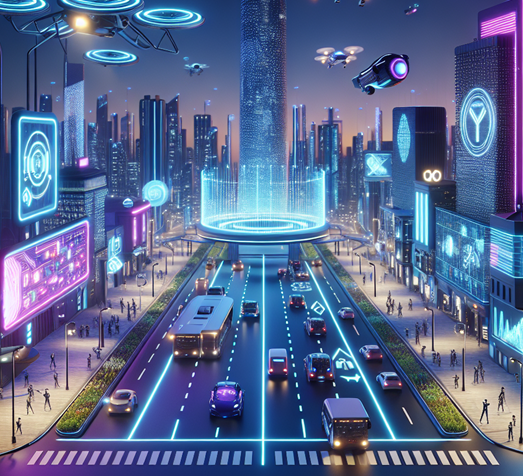The field of Artificial Intelligence (AI) has seen considerable progress in recent times. A sector that has notably surged forward is Generative AI. This aspect of AI is dedicated to devising intelligent systems that can produce new content, ranging from text and images to music. The development of Generative AI has been nothing short of astounding, with pioneering innovations like OpenAI’s ChatGPT redefining the limits of potential.
Since their introduction, generative AI algorithms have significantly evolved. In the beginning, their capacity to generate meaningful and context-specific content was rather restricted. Yet, the emergence of deep learning methodologies and access to extensive training data have revolutionized Generative AI. Presently, models such as ChatGPT boast a remarkable ability to create text that mimics human interaction, engaging in dialogues that frequently appear no different than those among humans.
Analyzing the Advancements of ChatGPT
ChatGPT, a creation of OpenAI, epitomizes the progress achieved in Generative AI. It’s a language model that has undergone training on a vast dataset, equipping it with the capability to comprehend and produce text in a dialogic way. Leading-edge methods such as the Transformer model have propelled the improvements in ChatGPT, enhancing its ability to understand context and maintain consistency in the text it generates.
A pivotal achievement in the evolution of ChatGPT was the unveiling of GPT-3. This model, driven by an impressive 175 billion parameters, exhibited an unparalleled capacity to produce consistent and contextually appropriate replies. It displayed the capabilities of Generative AI within the chatbot industry, paving the way for advanced prospects in the comprehension and engagement of natural language.
The Role of Generative AI in Shaping Future Chatbots
Generative AI is instrumental in determining the future trajectory of chatbots. In the past, chatbots were heavily dependent on pre-set rules and responses, which curtailed their capacity for substantive and fluid dialogues. However, the emergence of Generative AI has empowered chatbots with greater intelligence and flexibility.
Utilizing Generative AI models such as ChatGPT, chatbots can grasp the subtleties of human speech and produce contextually appropriate and cohesive responses. This unveils myriad opportunities for companies and institutions aiming to boost their customer service, automate specific procedures, and offer tailored experiences.
Chatbots driven by generative AI have the capability to transform sectors like e-commerce, healthcare, and customer service. They can offer immediate help, respond to questions, and even suggest options based on personal likes and dislikes. Such customization and engagement can significantly improve the user’s experience and boost customer contentment.
Understanding the Function of Chatbots
Chatbots are programmed systems created to mimic human-like dialogue. They employ a range of methods, such as Natural Language Processing (NLP) and Generative AI, to comprehend what a user inputs and to produce suitable replies. The fundamental objective of chatbots is to facilitate streamlined and effective interactions between humans and computers.
Chatbots primarily fall under two distinct classifications: rule-oriented and AI-driven. Rule-oriented chatbots function based on preset rules and responses, whereas AI-driven chatbots utilize sophisticated technologies such as Generative AI to produce dynamic responses that are contextually appropriate.
Chatbots serve purposes that extend further than just basic text-based exchanges. They have the capability to amalgamate with various systems and platforms, enabling users to carry out activities such as booking appointments, purchasing goods, or retrieving data. Their adaptability renders chatbots an essential instrument in task automation and the delivery of smooth user experiences.
Opportunities and Challenges in the Evolution of Generative AI and Chatbots
The emergence and growth of Generative AI and chatbots bring about a wealth of advantages and obstacles. Businesses have the potential to utilize these innovations to optimize procedures, boost client interactions, and secure a competitive advantage. However, it’s also essential to tackle the issues associated with the responsible and ethical application of Generative AI and chatbots.
A significant potential benefit can be found in the automation of client service. Chatbots, powered by artificial intelligence, are capable of managing a variety of customer inquiries, allowing human representatives to concentrate on tasks that are more intricate and crucial. This approach not only boosts operational efficiency, but it also minimizes expenses for companies.
Nonetheless, the application of Generative AI and chatbots comes with its own set of difficulties. A significant issue is the likelihood of bias and false information in the output produced. Given that these models learn from vast datasets, they may unintentionally acquire biases inherent in the data, resulting in prejudiced or incorrect replies. To tackle these problems, continuous research, development, and dedication to impartiality and openness are necessary.
How Businesses Can Leverage Evolving Chatbots and Generative AI
Companies can harness the growing potential of chatbots and Generative AI to stimulate expansion and enhance customer interactions. Here are several methods through which businesses can exploit the capabilities of these cutting-edge technologies:
- Improved Customer Service: AI-driven chatbots are capable of offering 24/7 customer service, managing regular inquiries, and offering immediate help. This boosts response speed, heightens customer contentment, and lightens the burden on human representatives.
- Personalized Recommendation: By scrutinizing user information and inclinations, chatbots can produce tailored suggestions for products or services. This degree of customization can markedly improve the user experience and foster customer allegiance.
- Automation of Procedures: Chatbots can streamline monotonous chores like handling orders or setting up appointments. This allows the workforce to shift their attention towards more strategic and value-enhancing tasks, thereby enhancing overall operational effectiveness.
- Gathering and Interpreting Data: Through their interactions, chatbots can amass crucial data, offering businesses an understanding of customer inclinations, challenges, and patterns. This information can be utilized to steer marketing tactics, the creation of products, and the process of making decisions.
Conclusion: Future Predictions for ChatGPT and Generative AI
The outlook for ChatGPT and Generative AI is optimistic and thrilling. With the relentless progression of technology, we can envisage substantial enhancements in the abilities and efficiency of these models. Here are several forecasts for what lies ahead:
- Increased Contextual Understanding: Future versions of ChatGPT are expected to demonstrate superior context comprehension, facilitating more fluent and cohesive dialogues. This advancement will further diminish the distinction between content generated by humans and AI.
- Multimodal Capabilities: It’s highly probable that Generative AI models and ChatGPT will adopt multimodal functionalities, which will allow them to produce not just written content, but also visuals, audio, and videos. This development will pave the way for novel opportunities in the field of creative content creation and engagement.
- Domain-specific Expertise: Specialized Knowledge in Specific Fields: Advanced AI models will become increasingly niche-focused and industry-specific, enabling companies to develop chatbots that are fine-tuned to specific sectors or segments. As a result, this will facilitate more precise and pertinent replies, thereby significantly improving the customer experience.
- AI Ethics and Accountability: With the growing prevalence of Generative AI and chatbots, the emphasis on ethical and accountable AI implementations is bound to increase. This encompasses tackling prejudices, guaranteeing transparency, and safeguarding user confidentiality.















